Magnetic Memory Method: An In-Depth Review from a Language Learner
What is Magnetic Memory Method?
The Magnetic Memory Method is a set of video courses that shows how to make words and phrases “magnetic” so they get stuck in your brain.
- what it’s for:
- Vocab, memory improvement, memory tricks
- languages:
- Works for Any Language
- level:
- Beginner - Advanced
+ PROS
- Learn vocab and phrases faster compared to flashcards
- Vocab sticks in long term memory
- Abundant language advice
- Well-structured and systematic course
- Generous refund policy and an open invitation to email the course creator at any time for help with the courses
- CONS
- Minor technical issues and typos
What is the Magnetic Memory Method and does it really work? In this review, I give the method a try for a specific project to help with my Spanish. I wanted to see whether it works for language learners.
When I joined the course I was interested, but a little skeptical of the big promise to make new words “magnetic”. Could it really be that easy to learn vocabulary as a language learner?
If you’re anything like me, as a lifelong learner, you’ve probably heard of at least one technique for improving your memory. Mnemonic devices, memory hooks, memory aids, memory prompts, the memory palace. Fluent in 3 Months (Fi3M) founder Benny has written about them several times on the Fi3M blog. They’re a proven way to remember vocabulary, names, or other lists of information that need to be memorized.
I have researched memory techniques on a few occasions during my time working at Fi3M. In theory, I knew how they worked and what made them useful for language learners.
And yet I’d never gotten around to seriously trying mnemonics for myself in my language learning. It seemed to me that the time I’d spend creating a memory palace would be better spent on my target language. I knew that to create a memory palace, I’d need to come up with a new, creative, memorable image for each and every new word I wanted to remember. Honestly, it seemed a little tedious.
Still, I knew deep down I wasn’t giving mnemonics a real chance. When I got the opportunity to review the Magnetic Memory Method for Fi3M, I decided to go for it, once and for all, to see if it would work for me.
I’m very glad I did. For one thing, it helped me memorize a long list of Spanish vocab that I had been putting off for a long time. For another, I learned that creating my own memory palace isn’t as hard as I thought.
What is the Magnetic Memory Method?
The Magnetic Memory Method is a set of video courses created by Anthony Metivier. It teaches the fundamentals of memory palaces and mnemonic devices for memorizing different types of information. In fact, Anthony has even written an introductory article about memory palaces for Fi3M.
There are several courses available as a part of the Magnetic Memory Method. The Masterplan course is the main introduction to the memory techniques Anthony teaches, including how to create a memory palace and how to think of and store memorable imagery (mnemonics) in your palace. If you had to pick just one Magnetic Memory Method course to do, this is it.
Other courses available include:
- How to remember your dreams
- How to learn and memorize the vocabulary of any language
- How to memorize names and faces
- How to learn and memorize poetry
- How to memorize math, numbers, simple arithmetic and equations
- How to memorize a deck of cards
Since Fi3M is a language-learning blog, I followed two courses for this review: the Masterplan, and How to Memorize the Vocabulary of Any Language.
To test out the techniques for myself, I picked a moderate goal that I had been meaning to do for a while: memorize the essential vocabulary from the Monterrey driver’s handbook so I could complete the written and practical exams for a driver’s licence here in Mexico, where I live.
Memorizing this type of information seemed perfectly suited to the Magnetic Memory Method. Plus, the driving exam would be an excellent way to test out how well I learned this vocab.
Getting Started with the Magnetic Memory Method
Getting started is as easy as selecting a course to register for at the bottom of the Magnetic Memory Method homepage under “Our Products”. You can choose an individual course or select “Masterclass” to get access to all of them.
Even if you’re totally familiar with mnemonic devices and memory palaces, I recommend starting at the beginning of whichever course you choose. That’s where Anthony introduces the concepts, guidelines and terminology he’ll use throughout the course. Some of these are unique to the Magnetic Memory Method and you likely won’t have heard of them before.
While each Magnetic Memory Method course is primarily a series of videos, it’s not a “passive” course. You’re expected to read the supplemental material, fill in the worksheets and do the exercises required to set up your memory palace. Don’t skip over this part. It’s pretty much the heart of the Magnetic Memory Method, and the only way to keep track of your memory palaces.
It does take some effort, but Anthony provides detailed, very useful tips for how best to create your memory palace, traverse it, and think up memorable images to fill it with. There are quite a few suggestions that I wouldn’t have thought of if I had been endeavouring to go through this process alone.
Aside from that, you’re quite free in how you complete a course. You can watch the videos, complete the exercises and read the accompanying ebooks at your own pace. The videos play without issue on both desktop and mobile so you can watch them when convenient. You can follow more than one course at a time if you want, or complete them in order.
My Experience with the Magnetic Memory Method
Since I only had a little experience with mnemonic devices and no experience with memory palaces, I started at the beginning of the Masterplan course.
How I Created My First Memory Palace
The Masterplan walked me through the process of identifying potential memory palaces and the stations within them.
Unlike the famous mind palace from BBC’s Sherlock, a good memory palace should be a real place, such as your house, school, workplace or other building that you know well. As for the stations inside where you’ll “store” the information you want to memorize, it’s all up to you to design them however you’d like. The Masterplan provides many useful guidelines for how best to choose stations, and especially how to go about it if you’re still a beginner to memory palaces.
In general, a station can be an entire room in your palace or something smaller like a piece of furniture. For more advanced learners, stations can be even smaller, such as the individual items on a shelf. To memorize information like a vocab list, you invent a memorable image or action that links the word to its English translation, and then you mentally place it at a station in your palace.
This is a step beyond the simple mnemonics I had previously learned. Instead of just linking a word to its meaning using some funny, exaggerated, cartoonishly violent or otherwise memorable image, you then also link the image to a location in your memory palace that you know very well; a location you can just close your eyes and instantly visualize. (By the way, if you find that you’re unable to visually imagine things in your mind, this course has advice for you, too.)
I used what I learned in the Masterplan to identify 26 potential memory palaces; one for each letter of the alphabet.
My memory project for this review was to learn driving-related Spanish vocab from the Monterrey driver’s handbook. I read the handbook and identified about 80 words that I didn’t already know. Then, I eliminated the words that I was able to easily recall the next day. This left a list of 58 words that needed more effort to memorize.
I wanted to put all of my words in one memory palace without having to pack them too “densely” since I’m still a beginner. I chose the largest house I had ever lived in so there would be plenty of room.
Here’s the map, with my route and stations shared:
(You don’t have to get this detailed when drawing your own memory palace. I just wanted it to be as clear as possible for this review.)
Storing Vocab in my Memory Palace
Now it’s time to fill the palace with memorable imagery for each vocab word in my list. There is plenty of information in the Masterplan course for making your mnemonics memorable. But to make sure I did this effectively for my Spanish vocab, I followed the course How to Learn and Memorize the Vocabulary of Any Language.
Filling up the memory palace is straightforward. For each word on my list, I did the following:
- Closed my eyes and imagined a way to link the Spanish word to a similar-sounding English word.
- Linked the English word to a memorable character or person performing some sort of action that conveys the meaning of the Spanish word.
- Imagined that action taking place at one of the stations in my memory palace.
Here’s an example:
One of the words I learned was silbato (“whistle”, as in a traffic officer’s whistle). I linked this word to two English words: Sylvester the cat from Looney Tunes, and a baseball bat. I created a vivid scene in my mind of Sylvester sneaking up on a sleeping Tweety Bird, planning to hit him with the bat. Looney Tunes’ famous suspenseful “tiptoe” music is playing in the background. Just before he reaches Tweety, a kettle of water starts boiling, whistling absurdly loudly. So Sylvester frantically bashes the kettle with the bat to silence it and not wake up Tweety.
The final step is to place the scene somewhere in my memory palace. I closed my eyes and visualized it taking place on my bed (station 16 in my memory palace). Tweety is sleeping on my pillow and Sylvester sneaks up on him from the end of the bed, when suddenly the kettle starts whistling right beside him.
Imagining it this way really worked. Now, whenever I hear the word silbato or “whistle”, I just picture my bed and instantly this scene pops into my mind and I remember the translation in a fraction of a second.
Getting Through the Tough Parts to Build Memorable Imagery
Not every word was so easy to relate to an English word. I noticed this especially with words containing the Spanish j sound. The word espejo (“mirror”) was tough to invent a good mnemonic for. But later in the course, there is a section covering more advanced topics, including this type of scenario. My final mnemonic linked the word espejo to the English word “spackle”, and I used a technique from the course to mentally remove the “L” sound in the mnemonic so I don’t forget that espejo has no L.
Full disclosure: I found the mnemonic part quite tough at first. I kept thinking of images that were too forgettable. As I said at the top of this review, the need to think up a separate memorable image or action for every single vocab word was a big reason why I didn’t try this technique seriously in the past. It seemed like too much effort, even if it really works.
It truly does get easier though. By the end of my vocab list, I could think up a mnemonic for a word, run through it several times in my mind to make it vivid, and mentally store it in my palace all in under a minute.
The Magnetic Memory Method course can’t think up your mnemonics for you, but it does provide a few examples to illustrate the principles. It also shows you a great formula to use in your own mnemonics, as well as tips and guidelines for conceiving the best possible images and actions to link to your target vocab.
Later in the Memorizing Vocabulary course, the techniques go beyond just memory palaces, stations and mnemonics for vocab. You learn how to memorize spelling and grammar in your target language, and even get tips on learning non-Latin alphabets. I didn’t apply these techniques to my own project since Spanish spelling is phonetic and grammar wasn’t part of it. But I’ll have a use for a lot of these tips when I continue with my Thai studies in the future. Thai spelling is about as weird as English!
The Easiest Part: Recall
My memory palace was set up and I had written down a short prompt for each station to describe the word stored there. Here are my prompts for my first five stations:
(I’d show you my full list, but some of them are awfully strange! But they’re memorable, which is all that matters.)
Now it was just a question of expanding on each prompt by adding vivid details and imagining exaggerated features like colour and size. Then, I visualized each one in my mind and “stored” it at the right station in my memory palace for retrieval when needed.
I was honestly amazed at how simple it was. Mnemonic devices truly do make it easy to remember information. Combined with the spatial cues of a memory palace, it’s downright trivial.
My routine for learning my mnemonics and storing them in the palace was pretty straightforward:
- For several nights in a row, I would take my notebook of mnemonics to bed (I found this environment helpful for concentrating; the course mentions that being relaxed is important for memorizing).
- For 15-20 minutes, I would go through a few stations, one at a time, and close my eyes to really visualize the action or character in my mind and link it both to the station and the word.
- When I shut the lights out, I would close my eyes and tour those stations in my memory palace one last time to recap the words I had learned.
- Upon waking the next morning, I would “tour” the stations again to see if I could still remember what I had studied the night before. I always could, without exception.
- That evening before bed, I’d start by mentally touring the memory palace up to the most recent station, and then I’d repeat the previous steps to add new words before bed.
I learned about 14 words a day this way, with almost no need to review at regular intervals throughout the day to keep it fresh in my mind, as I need to do with SRS. I might have been able to learn more words per day, but I only budgeted about 15 minutes per day before bed.
One of the biggest surprises I had after a few days of learning vocab was realizing that I didn’t need to visualize the entire sequence of events of each mnemonic in order to arrive at the Spanish word and its meaning. It was very surprising. I could just think of a station and the word would pop into my head.
For example, I could just imagine the bed in the master bedroom and the word ganado (“livestock”) would pop into my head. I didn’t have to think, “OK, the bed is where I imagined a big spotted cow holding a spoon and trying to eat a giant bowl of natto beans. It hates natto beans, so with each bite, it shouts ‘Gah! Natto!’, therefore ganado = ‘livestock’.”
So yes, while it takes some practice and mental effort to set up and fill your memory palace, the actual recall of information is trivial and extremely fast. In my opinion, this makes it more reliable and less of an effort overall than flashcards, even though the “startup cost” of creating palaces and stations is higher.
Magnetic Memory Method: The Good
There is a lot to love about the Magnetic Memory Method.
Unlike learning with flashcards, you can review the words in your memory palace without any materials in front of you. No matter where you are, you can just imagine your memory palace and mentally walk through the rooms (or fast-forward to a particular room) to see the words you’ve left there.
Your retention is very long. When I was first memorizing my list, I could go through my memory palace mentally once a day (first thing in the morning) and remember everything I had learned the night before. When I finished memorizing my entire list of 58 words (in just four days), I left it for several days before reviewing again, and I still remembered everything. It was actually pretty shocking how easily I retained 58 random Spanish words from the driver’s handbook.
You can learn more in a shorter amount of time than with flashcards. At least in my experience. Back when I used flashcards seriously, I found that about 10 words per day was a manageable amount, and it took many days of repetition before they stuck. I memorized about 14 words a day with Magnetic Memory and remembered them with less repetition.
The course is more than just how to memorize lists of words. There is a lot of other language advice in there, too. For example, there is a section in one of the Masterplan ebooks entitled “How Do I Find New Words That Will Make Me Feel Like Myself In A New Language?”
I also found the course well-structured and systematic. The concepts are introduced one at a time and are fully explained before moving on to the next. I never felt overwhelmed while following along with either course.
The Magnetic Memory Method is particularly well-suited to specific memorization projects or goals. For language learners, this could be a list of vocabulary, exceptions to grammar rules, irregular verbs or spellings…anything about the language that you have trouble memorizing by rote. Anthony even says you can use this technique to learn the vocab from a foreign language dictionary.
Finally, Anthony himself seems genuinely invested in the success of users of his courses. There is a generous refund policy and an open invitation to email Anthony Metivier at any time for help with the courses.
Magnetic Memory Method: What Could be Better
While I found the Magnetic Memory Method techniques useful and effective, I did notice a few things with the setup and format of the course itself that made for a less-than-perfect user experience.
Each course is a set of video modules with accompanying worksheets and reading material. There isn’t a way to track your progress as you complete the course, such as letting you mark videos as watched or mark modules as complete. If you take a break from the course for a few days, you may forget where you left off when you come back to it later. Having a checkbox beside each video where you can mark it as watched and a personal dashboard that lists your watched and unwatched videos so you can easily find and click on the next video would be a very useful feature.
[Editor's Note: Anthony Metivier got in touch to let us know that students are encouraged to track their progress with a memory journal. This is a way to help them improve their memory skills.]
The reading material that accompanies some of the lessons is not mobile friendly. It’s in PDF documents, meaning it’s formatted exactly the same no matter how small the screen is. I would have to pinch to zoom and then pan from left to right to read each line. Turning my phone to landscape mode helped, but only a little. So I mostly stuck to reading on my computer. However, I understand Anthony is currently working on a new version of the website, and the ebooks will then be available in other more versatile formats.
The ebooks themselves could use a bit of polishing to improve their readability. For instance, the hyperlinks inside many of them are plaintext and can’t be clicked. You have to manually copy and paste them into your address bar. But you can’t copy and paste from a PDF on a mobile browser.
There are also some typos in the ebooks, both in spelling and the editing of sentences. You can gloss over these errors and not miss out on the overall point, but I did find it distracting sometimes to have to reread sentences that I thought I had misread but were actually written incorrectly.
Finally, there are a couple of technical issues with the website. These include the occasional broken or incorrect hyperlink on some pages and very quiet audio on some videos. These are issues that will hopefully be resolved in the new version of the course.
Magnetic Memory Conclusion: “I Expected it to Work, But Not Quite So Well”
The Magnetic Memory Method is a very effective method for memorizing vocabulary in your target language. Vocab is usually the biggest limitation for beginners in a language. Verb tenses, good accent and proper syntax won’t get you very far if you don’t know many words. So while Magnetic Memory shouldn’t be your only language-learning method, I definitely recommend it for amassing large amounts of vocabulary in a short time. You can use it whether you’re a beginner or an advanced speaker.
This was my first real foray into the world of mnemonics and memory palaces. I expected Magnetic Memory to work, but perhaps not quite so well. It’s been weeks since I memorized my 58 vocab words and I still remember them all with almost no effort, and no need for frequent reviews (I mentally traverse my palace about every 2-3 days, which is more than often enough). I can say pretty confidently they’re in my long-term memory.
I plan to continue with these techniques as I advance in Spanish (and maintain my Thai skills). I subscribed to News in Slow Spanish, which will give me lots of new vocabulary to memorize. I may also go beyond vocab lists and try to memorize Spanish songs and lines from my favourite Spanish TV shows. I’m even going to see if I can apply the Magnetic Memory Method to other topics, such as learning the Swift programming language, which I use for doing iOS development in my spare time.
Whatever you need to memorize, make some room in your routine to give Magnetic Memory a try.
My “Test” Results
The reason I memorized driving-related vocab was to get a Mexican driver’s licence. I booked my appointment for the test in person and all seemed well… but when I turned up at the licence centre a few weeks later, I was told I’m not allowed to take the driving test! I’m still only a temporary resident here in Mexico and won’t be eligible for a licence for another six months. I was super disappointed!
That said, the vocab I learned is still essential for me as a car owner in Mexico, with or without a local driver’s licence. So finally taking the time to memorize it was well worth my time. Plus, the vocab is in my long-term memory, so I’m pretty sure I’ll remember it even six months from now.
Still, I wanted to find some way to check my knowledge. So I tested myself with this online driving quiz. I’m pretty pleased with my result: 14/16!
And being compared to Erik Estrada in his younger years is a nice bonus. 😊
Want to try out the Magnetic Memory Method for yourself? Then check out the Magnetic Memory Toolkit – it's free.


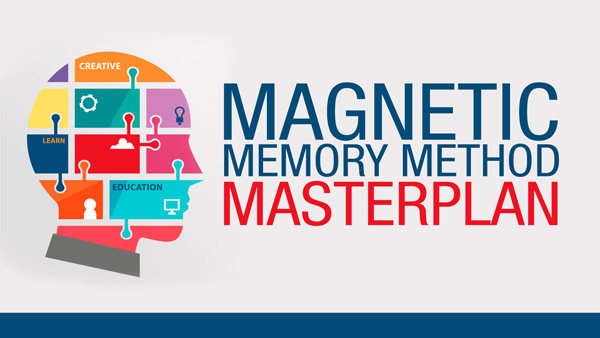
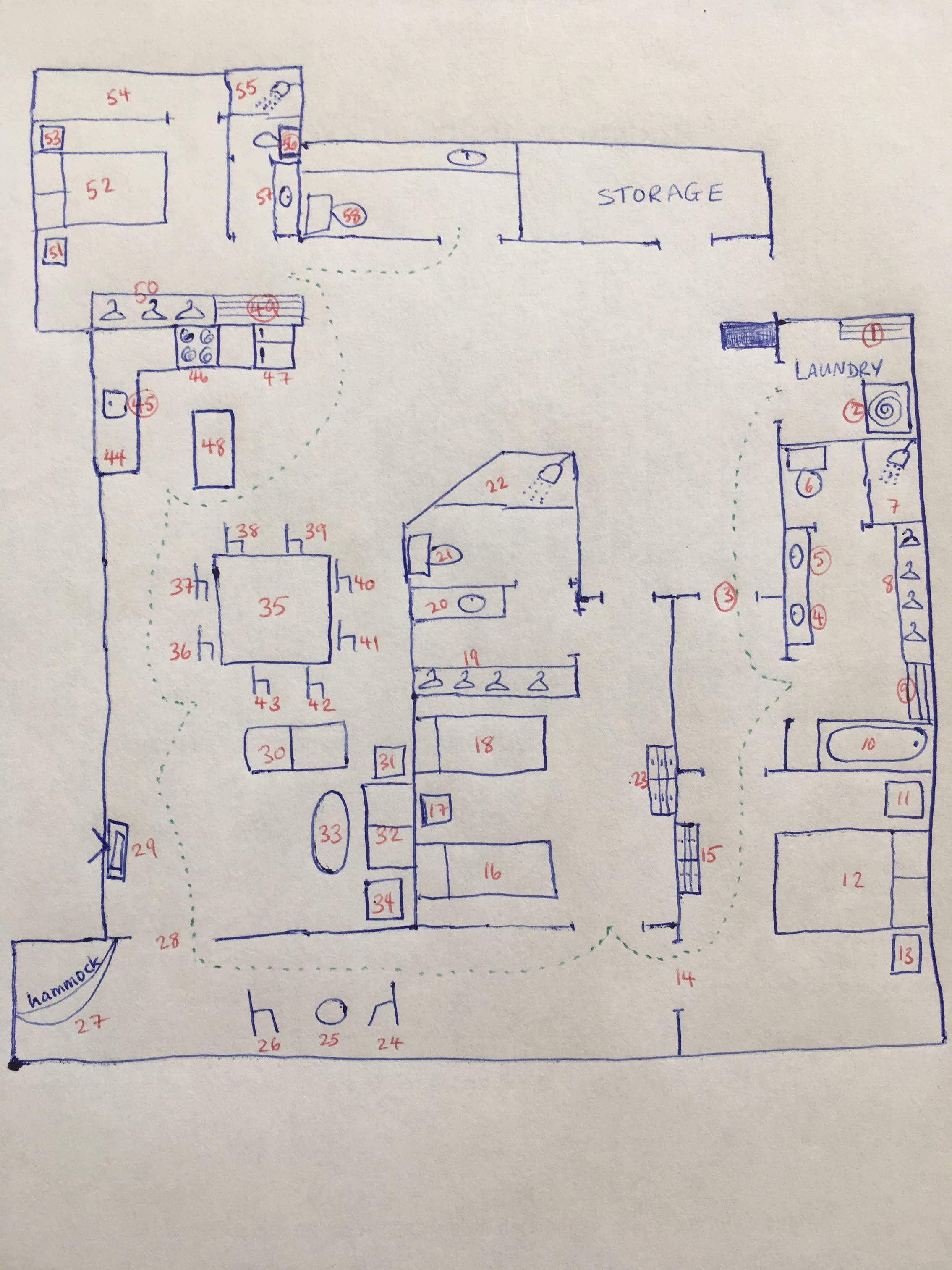
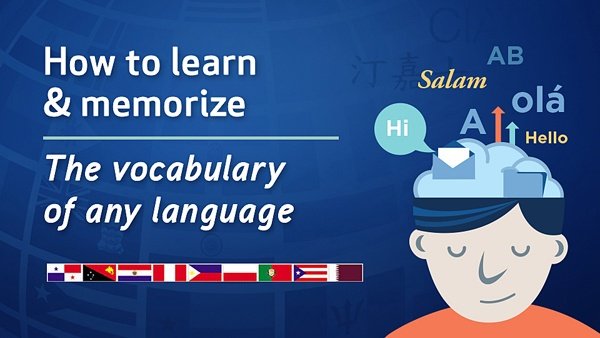
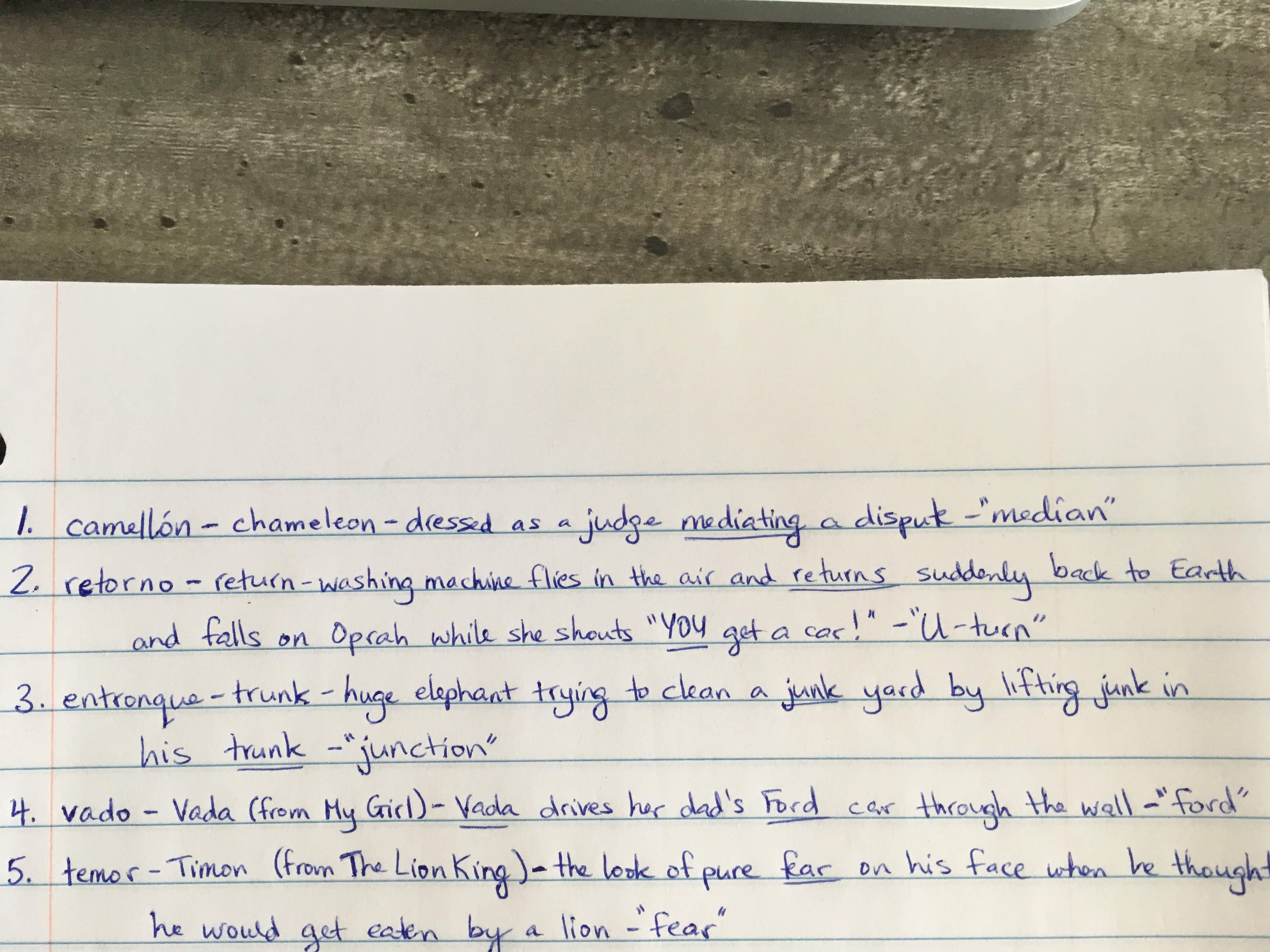
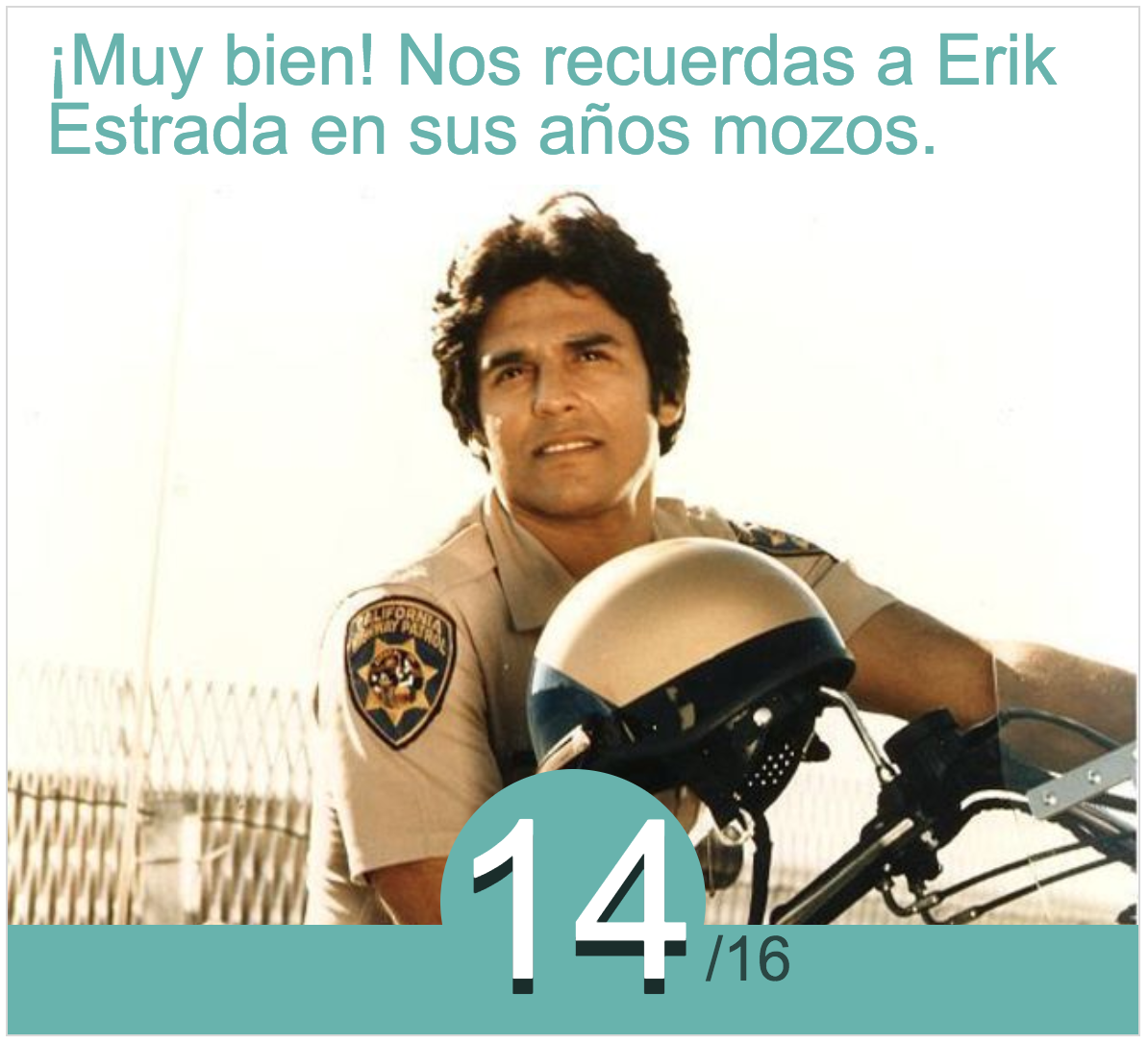

Social